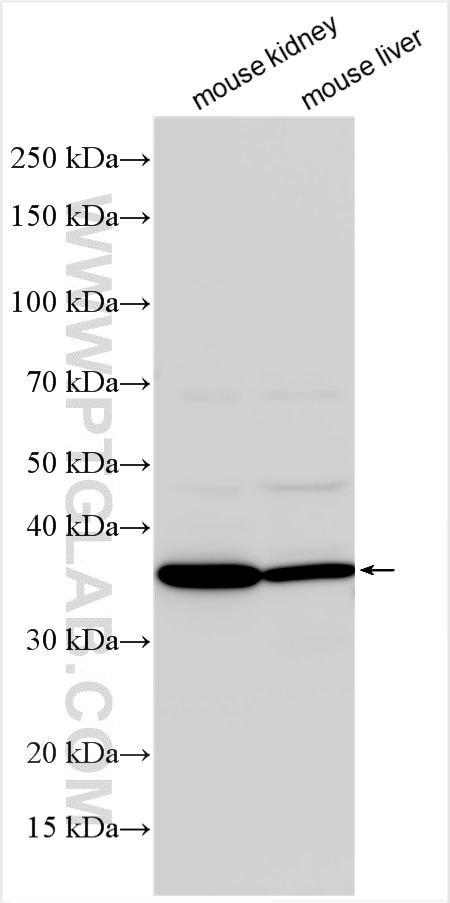Tested Applications
| Positive WB detected in | mouse kidney tissue, mouse liver tissue |
Recommended dilution
| Application | Dilution |
|---|---|
| Western Blot (WB) | WB : 1:1000-1:4000 |
| It is recommended that this reagent should be titrated in each testing system to obtain optimal results. | |
| Sample-dependent, Check data in validation data gallery. | |
Product Information
31629-1-AP targets CRYZ in WB, ELISA applications and shows reactivity with human, mouse samples.
| Tested Reactivity | human, mouse |
| Host / Isotype | Rabbit / IgG |
| Class | Polyclonal |
| Type | Antibody |
| Immunogen | CRYZ fusion protein Ag35066 Predict reactive species |
| Full Name | crystallin, zeta (quinone reductase) |
| Calculated Molecular Weight | 35 kDa |
| Observed Molecular Weight | 35 kDa |
| GenBank Accession Number | BC039578 |
| Gene Symbol | CRYZ |
| Gene ID (NCBI) | 1429 |
| RRID | AB_3670055 |
| Conjugate | Unconjugated |
| Form | Liquid |
| Purification Method | Antigen affinity Purification |
| UNIPROT ID | Q08257 |
| Storage Buffer | PBS with 0.02% sodium azide and 50% glycerol, pH 7.3. |
| Storage Conditions | Store at -20°C. Stable for one year after shipment. Aliquoting is unnecessary for -20oC storage. 20ul sizes contain 0.1% BSA. |
Background Information
CRYZ (Zeta-crystallin) also called quinone oxidoreductase and NADPH:quinone reductase, and it does not have alcohol dehydrogenase activity. It binds NADP and acts through a one-electron transfer process. Orthoquinones, such as 1,2-naphthoquinone or 9,10-phenanthrenequinone, are the best substrates (in vitro) for CRYZ. It may act in the detoxification of xenobiotics. CRYZ interacts with (AU)-rich elements (ARE) in the 3'-UTR of target mRNA species and enhances the stability of mRNA coding for BCL2. NADPH binding interferes with mRNA binding (PMID: 17497241; 20103721).
Protocols
| Product Specific Protocols | |
|---|---|
| WB protocol for CRYZ antibody 31629-1-AP | Download protocol |
| Standard Protocols | |
|---|---|
| Click here to view our Standard Protocols |



